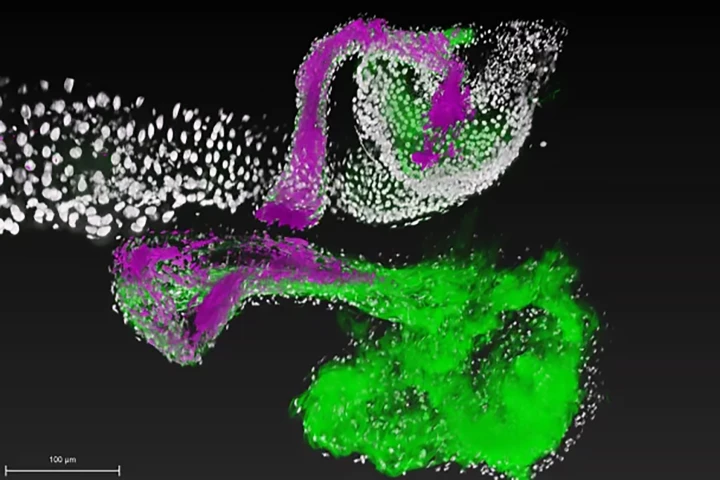Carnegie Institution for Science
-
Beneficial bacteria occupy specific regions in the gut, contributing to our health via the microbiome. A new study has identified the genes that good bacteria use to colonize these regions, opening the door to creating engineered probiotics.
-
A new study led on how water could form on young exoplanets with hydrogen atmospheres and molten oceans of magma suggests that Earth-like planets may not be as rare as once thought and that the presence of water on such planets may be almost inevitable.
-
The extremely hot interior of Earth is slowly cooling down, but exactly how fast is unknown. By studying how well a common deep-Earth mineral conducts heat, researchers have now found that the planet’s interior may be cooling faster than expected.
-
Researchers at Carnegie Science have developed an ultrahard diamond glass. Made entirely of crushed “soccerballs” of carbon, the new material also has high thermal conductivity and could find use in electronics.
-
Silicon is vital to all of the electronics that our modern world is built on. Now, research led by the Carnegie Institution for Science has developed a way to create a new form of silicon with a unique hexagonal structure.
-
An international team of researchers has made a discovery that could prove useful to the efforts to preserve the world's coral reefs, using the CRISPR/Cas9 gene editing tool to identify a key gene that regulates their response to heat stress.
-
Aquatic hypoxia can be a serious problem, producing oxygen-depleted "dead zones" in lakes or seas. New research suggests that a process known as downwelling may help keep those zones from forming – although it wouldn't be a cheap solution.
-
The discovery of 20 new moons around Saturn brings its total to 82 – three more than Jupiter, which was previously thought to hold the record.
-
Astronomers are welcoming the newest and most distant object in the solar system – a dwarf planet orbiting more than 100 times further from the Sun than Earth. And because its discoverers aren’t the most creative bunch, it’s been dubbed “Farout.”
-
There could be thousands of dwarf planets – Pluto-sized or smaller – lurking at the very edges of the Sun’s influence. Now, astronomers have spotted a new distant dwarf with an incredibly wide orbit, lending further evidence to the idea that a much bigger “Planet X” is out there somewhere.
-
With dozens of moons whizzing around Jupiter, it makes sense that a few have slipped under the radar, but the latest discovery is still a surprisingly large haul. Astronomers have announced the detection of 12 new moons orbiting Jupiter, including one particularly reckless “oddball.”
-
When it was first discovered in 2016, Proxima b looked like a prime spot to hunt for extraterrestrial life. More recent studies have painted a bleaker picture, and now the final nail in the coffin could be a huge stellar flare detected last year, which would have baked the surface of the planet.
Load More











